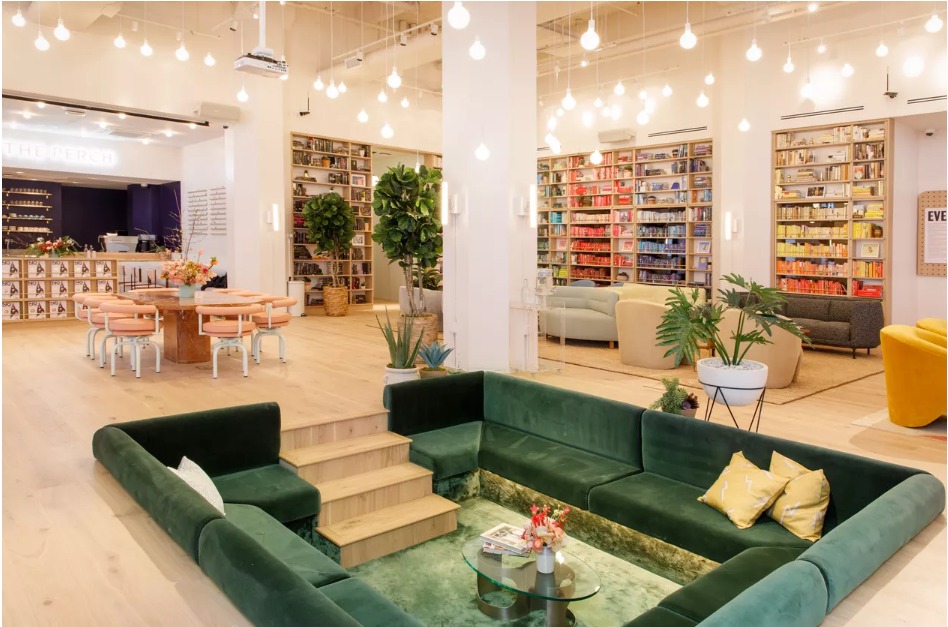[ad_1]
Conversation Pits Are Making a Comeback

With all of the strange residential interior design trends that are making a comeback, conversation pits are probably one that you wouldn’t expect. This well-known 1970s design feature feels both very retro and modern, providing a comfortable place to lounge and a complete escape from the distractions of television and cinema. Instead of a design that supports and enhances a digital connection, having a large area to sit, and quite literally conversate, might be the space that we all need.

You’ve probably seen conversation pits before, in old magazine images or even in mainstream television shows that depict life in an American suburb from 50 years ago- a living room that’s basically a hollowed-out hole with an enlarged couch in the center of an open floor area. They’re typically accessed by a small staircase that leads into an area of L or U-shaped modular seating that can be arranged in various ways. Architect Bruce Goff is credited with being the design mind behind the very first conversation pit with a house he constructed in Oklahoma in 1927. However, the Miller House, built in 1952 by Eero Saarinen in the architectural mecca of Columbus, Indiana, is given credit as the home that started the national trend and escalated its popularity. Commissioned by J. Irwin Miller and his wife, Xenia, the Miller house strived to create a bright, welcoming space, the heart of which was a spectacular sunken lounge that not only created an intimate space for conversations but also allowed visitors to view the Dan Kiley landscaped gardens that surrounded the home. The pit was accessed by four stairs (and no railing) and was received with as much criticism as applause, for its bold and unique design.
The idea for this design was supposedly inspired by the open and refined spaces that Saarinen observed in Japanese homes. Others believe that conversation pits were derived from European inglenooks or enclosed areas that surrounded fireplaces that dated back to 1100 AD. Benches and other seating options surrounded this area so that people could stay warm and be near where food was cooking. Naturally, the conversation pits we know today are also occasionally located near a hearth or a more modern fireplace.
Related Article

At their peak, they were most popular in the 1960s and 70s, a time when people became more aware of space serving as its most efficient function and when people considered a home to be forever. Conversation pits were featured in mainstream television such as The Dick Van Dyke Show, and in many installations of James Bond movies. Over time, people moved away from the design of conversation pits, largely to what many people believe was a societal shift in living rooms being less about gathering and talking, and more about coming together to watch television- removing the “conversation” from the term conversation pits. Additionally, many people began to feel unsafe, as unsuspecting guests could accidentally walk right into one without knowing, and families began to realize that they weren’t designed with child safety in mind.
As most design trends tend to do- the conversation pit is back: the historic TWA terminal at JFK airport in New York City, which was recently restored to its former glory, included its original conversation pit turned into a bar seating area that overlooks a small, refurbished runway. Other corporate workplaces are seeing the trend re-emerge, as workers search for ways to gather informally for impromptu conversations- and no better way to do it than in a conversation pit.
Another influence of their return has been a renewed appreciation for midcentury modern and retro design: Instagram pages, Reddit threads, and TikTok accounts are dedicated to curating the best images and descriptions of conversation pits from another era. Moreover, conversation pits have the ability to re-introduce the sense of community that they were once envisioned to create. Additionally, as residential floorplans in general skew towards more open areas, conversation pits can create a space within a space. What design trend will we see make the next come back?
[ad_2]
Source link
